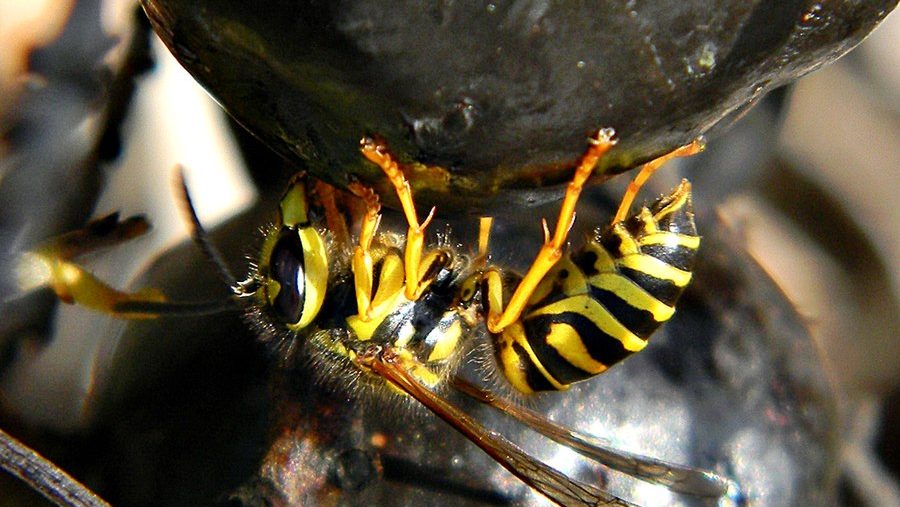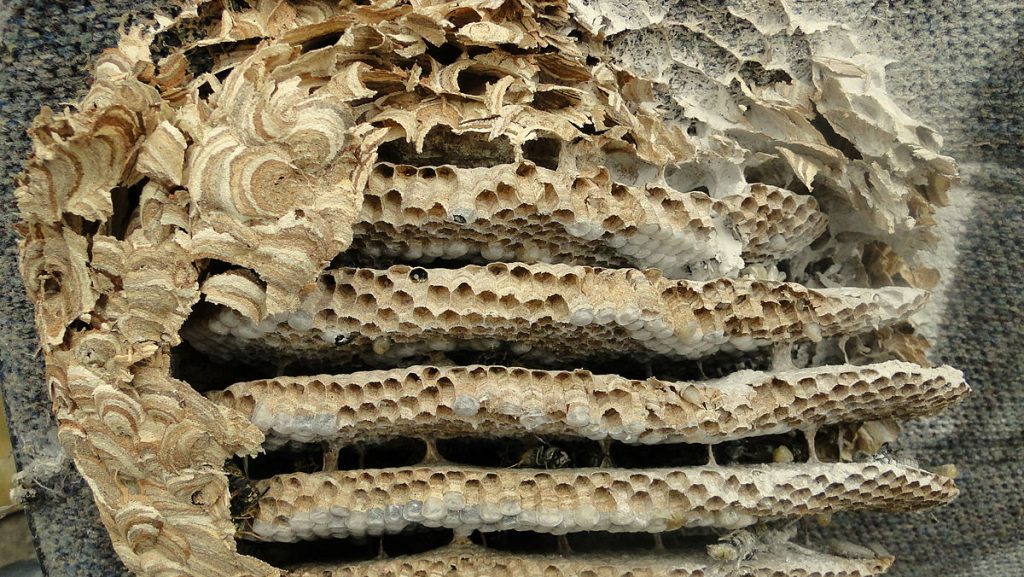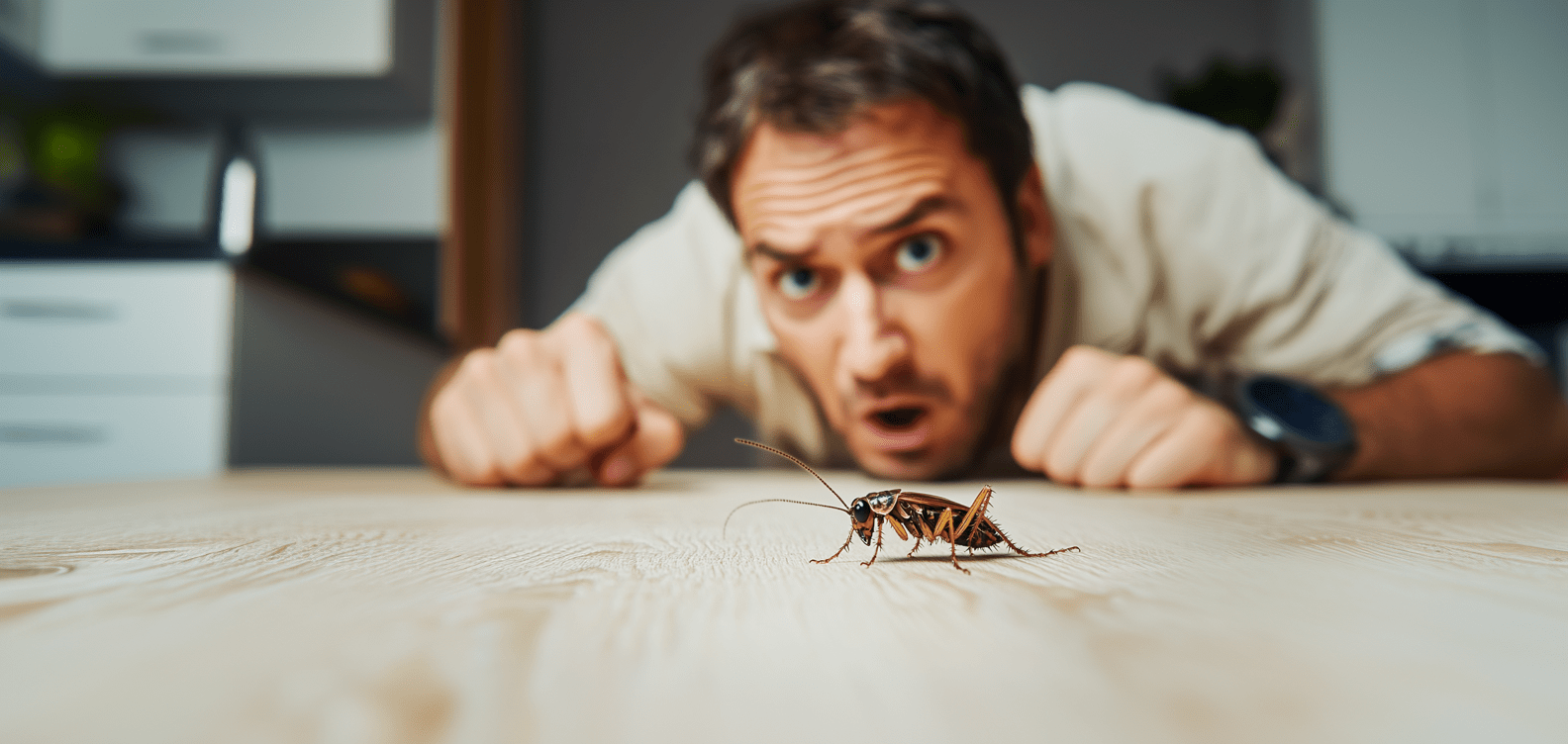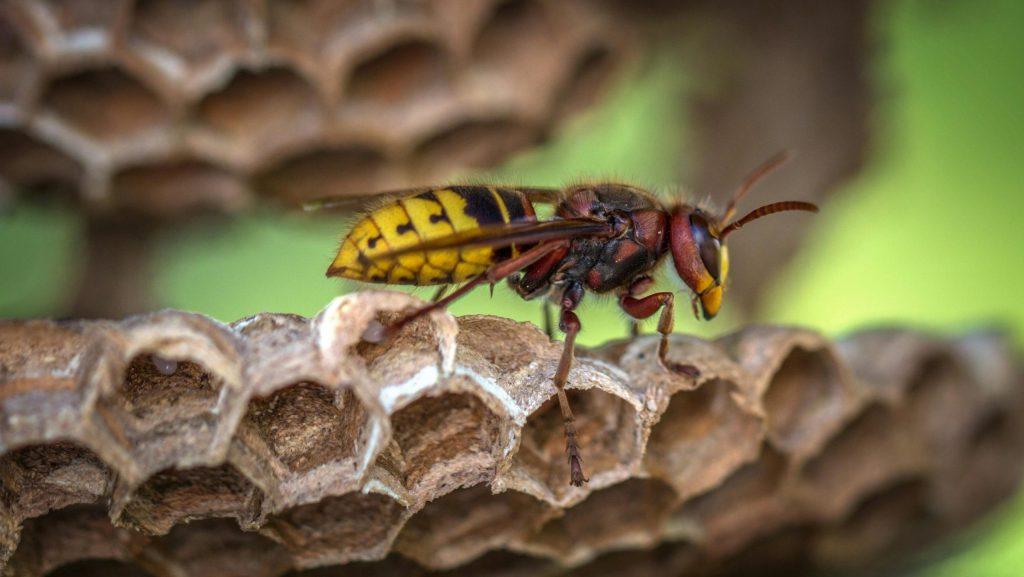Yellow jackets are a common sight in gardens and outdoor spaces, many homeowners worry about the impact they can have on their property. The question on many minds is: Can yellow jackets damage my home? The short answer is yes, but it’s more than just physical destruction. Let’s understand more about yellowjacket behavior and methods to prevent yellowjackets.
 Yellow jackets build their nests in protected areas, and they often choose wall cavities, attics, or even the ground near a house. Unlike bees that produce honeycomb, yellow jackets construct their nests out of a papery material made from chewed wood fibers. This can lead to problems if the nest is located inside your walls, attic, or other structures.
When yellow jackets build nests inside walls, they may chew through insulation and drywall to expand their living space. Over time, the weight of a large nest, especially when it becomes damp, can damage the integrity of the wall. Additionally, yellow jackets may gain entry through small cracks and crevices in your home, further weakening its structural integrity.
Yellow jackets build their nests in protected areas, and they often choose wall cavities, attics, or even the ground near a house. Unlike bees that produce honeycomb, yellow jackets construct their nests out of a papery material made from chewed wood fibers. This can lead to problems if the nest is located inside your walls, attic, or other structures.
When yellow jackets build nests inside walls, they may chew through insulation and drywall to expand their living space. Over time, the weight of a large nest, especially when it becomes damp, can damage the integrity of the wall. Additionally, yellow jackets may gain entry through small cracks and crevices in your home, further weakening its structural integrity.



 While yellow jackets aren’t likely to cause extensive damage compared to termites or carpenter ants, the nests they create inside your walls, attic, or other hidden spaces can lead to structural issues. Additionally, yellow jackets are aggressive defenders of their nests and can sting multiple times, posing a risk to anyone who disturbs them.
While yellow jackets aren’t likely to cause extensive damage compared to termites or carpenter ants, the nests they create inside your walls, attic, or other hidden spaces can lead to structural issues. Additionally, yellow jackets are aggressive defenders of their nests and can sting multiple times, posing a risk to anyone who disturbs them.

Can Yellow Jackets Damage My Home?
Yes, yellow jackets can damage your home in several ways, including:Structural Issues Caused by Yellow Jackets
- Structural Strain: Large nests inside walls or ceilings can cause noticeable strain, leading to cracks or sagging drywall.
- Chewed Materials: Yellow jackets may chew through insulation, wood, or other materials to expand their nests.
- Persistent Infestations: Once established, yellow jackets may return to the same location year after year, creating recurring problems.


Not getting a solution?
Get your free pest control estimate today!How Yellow Jackets Enter Your Home
Yellow jackets are opportunistic when it comes to nesting locations. They can enter your home through even the smallest openings. These might include gaps in window screens, spaces around door frames, vents, or cracks in the foundation. Once inside, they search for secluded areas to establish their nests.Common Entry Points for Yellow Jackets
-
Cracks and Gaps in Walls or Siding: Even small openings in exterior walls, brickwork, or siding can provide access for yellow jackets. Once inside, they can find their way into wall voids or attics, where they will start building their nests.
-
Unscreened Vents or Chimneys: Chimneys and roof vents are another favorite entry point. If these are not properly screened or sealed, yellow jackets can easily slip inside and build nests in the attic or roof space.
-
Openings in the Roof or Attic: Attics are often attractive spaces for yellow jackets because they are dark, warm, and quiet—perfect for nest building. They may enter through gaps in the roofline, soffits, or fascia boards.

Understanding Yellow Jacket Behavior
Yellow jackets are social insects that build nests to support their colonies. Their behavior is characterized by:Yellow Jacket Characteristics
-
 Nesting Preferences: Yellow jackets often build nests in wall voids, attics, and other sheltered areas of your home.
Nesting Preferences: Yellow jackets often build nests in wall voids, attics, and other sheltered areas of your home. -
 Feeding Habits: These pests are attracted to sugary foods and proteins, making them common visitors near garbage bins, outdoor dining areas, and pantries.
Feeding Habits: These pests are attracted to sugary foods and proteins, making them common visitors near garbage bins, outdoor dining areas, and pantries. -
 Aggression Levels: Yellow jackets can be highly aggressive, especially when they perceive a threat to their nest.
Aggression Levels: Yellow jackets can be highly aggressive, especially when they perceive a threat to their nest.





